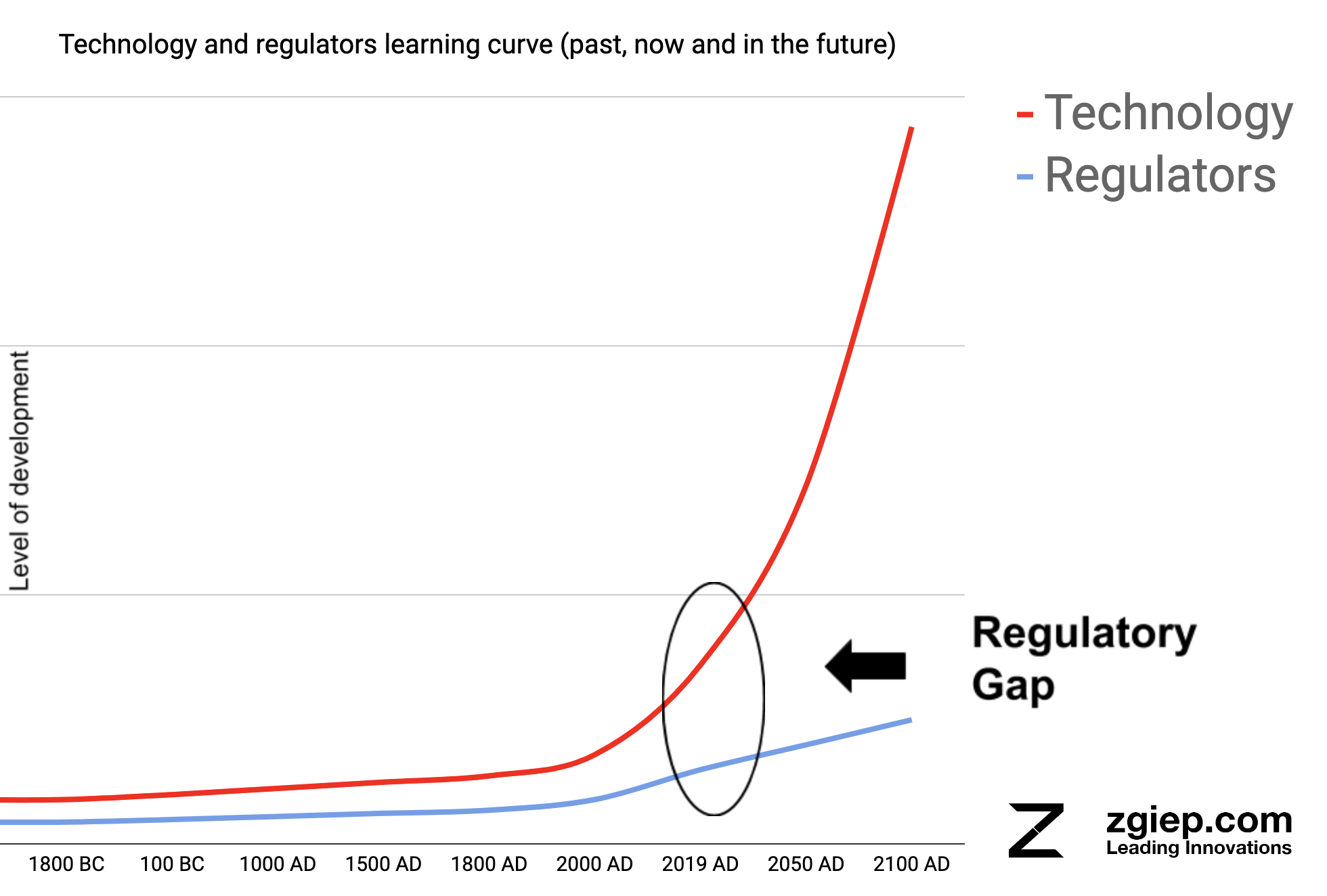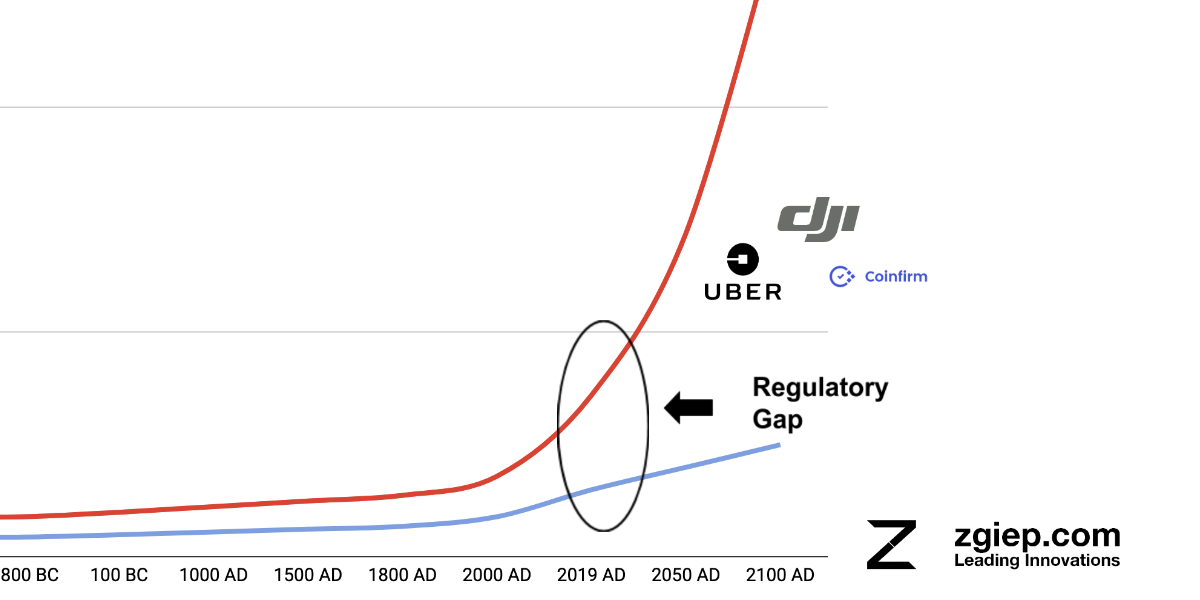The pace of new technological discoveries is growing every year. It’s getting harder and harder to keep up with the latest technology trends. They appear new, some of them interpenetrate, creating innovative market segments. Artificial intelligence, blockchain, drones, electric vehicles, collaborative economy platforms, virtual reality, autonomous cars, bioengineering, gene editing, fintech, martech, regtech, medtech, insurtech – the average person is not able to monitor these phenomena. As people, we cannot keep up with the pace of technology development and regulators of individual markets cannot keep up. In highly developed countries, individual legislators try to keep their finger on the pulse by employing the best possible market consultants and advisers. As a result, UK, Singapore, USA and Israel often occupy key positions in the race of new technologies, creating regulations supporting their development in a given country. In less developed countries, regulators are much less able to track trends in new technologies.
There has been some kind of regularity in the world for thousands of years. Business is growing faster than the regulations that govern it. Nowadays, business increasingly boils down to technology, which is why new governance regulations are inevitable. First of all, it is a tasty morsel for a regulator, e.g. a digital tax. Second, regulators, seeing a decline in budget revenues from outdated business models or technologies, want to replenish the treasury.
There is a phenomenon that I call a regulatory gap. This gap has existed for millennia and often in the space of this gap new revolutionary solutions are created that change the paradigm of various sectors of the economy by significantly increasing efficiency. Throughout the vast majority of the civilized world as we know it, the law tried to catch up with the business that set trends. We still have it today. However, the learning curve of the regulators is not steep! In the 21st century, new technologies and business models are developing faster and faster every year. In the last 20 years, technology has significantly accelerated its development and there is no indication that it will slow down in the next 20 years.
Over the last 5 years, I have participated in numerous regulatory consultations at national and European level. I follow the actions of regulators in various regions of the world. My observations show that the regulatory gap will continue to widen. I will try to depict this phenomenon on a simplified chart.

Uber
Many tech companies have long realized this and are implementing self-regulatory strategies. Collaborative economy platforms have a number of their own regulations that guarantee them quick scaling and elimination of irregularities, e.g. verification on entry or exit, star reputation systems, special tests or elements of artificial intelligence. A simple example is Uber’s reputation system. After each trip in the Uber application, both the passenger and the driver are forced (will not be able to make another trip) to issue an opinion on the other party. Drivers rate passengers and passengers rate drivers. As a result, dishonest participants of this market are quickly and effectively eliminated.
DJI
A great example of filling the regulatory gap is the recent software update for DJI drones. For over two years, I have been a licensed drone operator and observed the regulations on the global market. I have an official qualification certificate issued by the Civil Aviation Authority. The Chinese company DJI is the world’s largest producer of consumer drones, it has approx. 80% of the global market. Droniers can be divided into those who already fly DJI and those who will be flying it soon. It can be said that DJI has the potential to become almost a monopoly in this market. In early 2019, DJI released a software update for all drones that includes virtual air zone walls. This means that now, for example, when flying near a power plant, when approaching the excluded air traffic zone above the power plant, even if the operator extends the controller stick to enter the forbidden zone, the drone will automatically stop on the virtual wall and will not be able to fly into the forbidden place. I am very impressed with DJI’s strategy, which thus rises above national regulations and, in a way, provides a guarantee of compliance with aviation regulations from an automatic machine for all its devices.
Coinfirm
There are more similar analogies. In the world of finance, a huge challenge for companies is to meet the requirements related to AML (Anti-Money Laundering) and KYC (Know your customer). Anti-money laundering (AML) and customer identity verification (KYC) are mandatory procedures for many companies in the financial sector. The effectiveness of AML procedures in traditional companies fluctuates around the statistical error and is at the level of several percent. An innovative company operating in the field of regulatory techonology (regtech) Coinfirm provides AML service for transactions based on blockchain technology, the effectiveness of which oscillates around 80% – 90%. This is a good example of how technology can stay ahead of regulations and significantly increase compliance.
I hypothesize that in the future, as the regulatory gap widens, the role of national regulators will decrease in favor of regulations introduced by technology companies.
What is your view on the regulatory gap?
Feel free to discuss this in the comments.
Cheers,
LSZ

